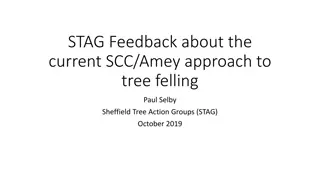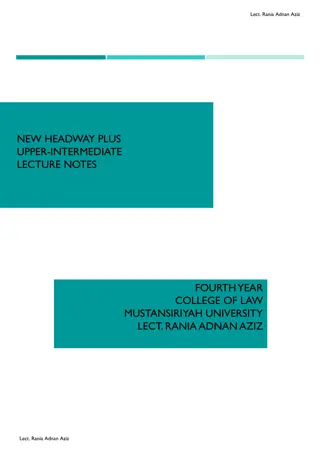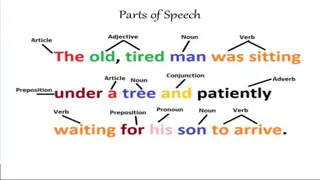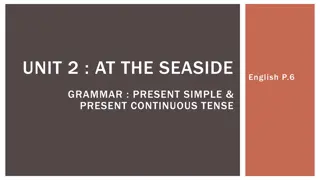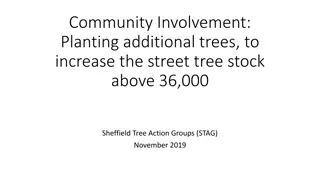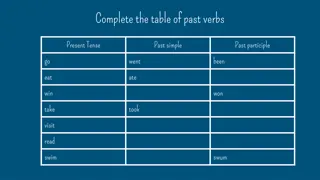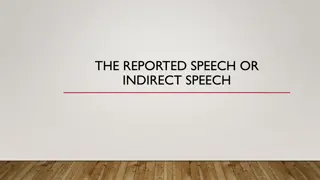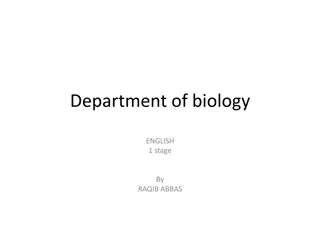Understanding the Past, Present, and Future of PFI - March 2015
Introduction to PFI and its impact, detailed analysis on Scotland's fiscal position, costs associated with PFI, and evaluations on whether PFI is beneficial. Discusses the history, purpose, benefits, challenges, and future implications of PFI initiatives in various sectors.
Download Presentation

Please find below an Image/Link to download the presentation.
The content on the website is provided AS IS for your information and personal use only. It may not be sold, licensed, or shared on other websites without obtaining consent from the author. Download presentation by click this link. If you encounter any issues during the download, it is possible that the publisher has removed the file from their server.
E N D
Presentation Transcript
/PFI the cost of the past savings for the future? March 2015
AGENDA 1. 2. 3. 4. 5. 6. Introduction and Background What is PFI and why was it introduced? PFI Good or Bad? Are existing deals fit-for-purpose ? Traction and Way Forward Summary
1. INTRODUCTION AND BACKGROUND Alan Jessop Senior Consultant CIPFA Business Limited Alan.Jessop@cipfa.org The Public Accounts Committee chair, Margaret Hodge MP has been quoted as describing PFI as '.. hugely expensive
SCOTLANDS FISCAL POSITION 2013/14 Net fiscal balance: -12.2% of GDP ( 16.4bn) excluding North Sea revenues or -8.1% if geographic share included 2013/14 government expenditure down 4.2% in real-terms Future projections show the deficit falling but remaining above 10% (compared to 4% for UK) Oil prices have fallen and remain lower than the last few years Devolved tax raising will place further fiscal pressures Institute for Fiscal Studies March 2015
COSTSOF PFI Guardian July 2012
2. WHATIS PFI AND WHYWASITINTRODUCED? Recommended vehicle for delivering procurement of (mainly) serviced accommodation projects Historic under-investment in UK Infrastructure Private sector innovation and investment sought Government wanted costs (borrowings) to be off-balance sheet Business case approval had to take account of value of risk- transfer to private sector UK-wide over 700 projects undertaken with capital value of 55 billion Scotland 85+ projects completed; Capital costs in excess of 5 billion; Annual commitments (at close) in excess of 1 billion Health, Education, Roads, Waste, Government Accommodation
3. PFI GOOD? It is wrong to assume that PFI is automatically a bad thing costs are simply more visible Sectors such as Health and Education have benefitted from accelerated building programmes that would not have been funded through traditional means East Lothian Schools completed despite failure of building contractor; additional funding provided by all funders Building condition through contractual requirements will be maintained throughout the project life Detailed specifications and procurement forced the Public Sector to think before buying Public sector procurement is (historically) poor, costly and prone to lengthy delays .
3. PFI GOOD? A classic, recent and local example of Public Sector procurement: The Scottish Parliament Building 1997 - Original cost estimate (White Paper) - 10-40 million 1998 Cost Revision - 50 million ( construction management model ) 1999 Cost revision - 109 million 2000-2006 various changes to specification; contractual dispute and ongoing design issues 2007 Out Turn Final costs of 414.4 million; buildings completed 3 years late 2014 annual maintenance costs running at 1.7 million; buildings not performing to design or user needs
3. PFI BAD? There are numerous examples of high incremental costs the 500 electrical socket; high costs of change and review Contracts are highly complex, inherently inflexible, weighty and difficult to interpret and manage Contractual provisions are often not applied correctly Resources often not dedicated to contract/project management Conflicts of interest abound with self-monitoring not working Long term contracts tied to fixed inflator; irrespective of actual market changes:
4. AREEXISTINGDEALSFIT-FOR-PURPOSE? RPI versus the real world Outdated service specifications Asset utilisation Public sector default Refinancing Portfolio gains Contract management Prepayment maybe a costly option:
4. AREEXISTINGDEALSFIT-FOR-PURPOSE? Three examples of projects repurchased : 1. Skye Bridge Original capex (1995) - 39 million; 27-year concession; would revert once equity return hurdle met; tolls set at level of existing ferry; Repurchase (2004) - 27 million 2. Inverness Airport Original capex (1999) - 9.5 million; 25-year concession; included airport expansion once passenger numbers reached hurdle; based on passenger charges; Repurchase (2005) - 27.5 million 3. West Lothian College Original capex (1999) - 18 million; 25- year concession; designed to cope with high levels of growth in student numbers; Repurchase (2006) - 27.5 million
5. TRACTIONANDTHE WAY FORWARD Code of Conduct Best Value Provisions New funding models: Non-Profit Distributing HUB PF2 New major infrastructure investments Pooled funding Innovation?
6. SUMMARY Review services, assets, performance Revise current needs, ability to pay, current market Reprice benchmark, market test, negotiate Renegotiate all changes, Refinance Repay Speak to CIPFA!




